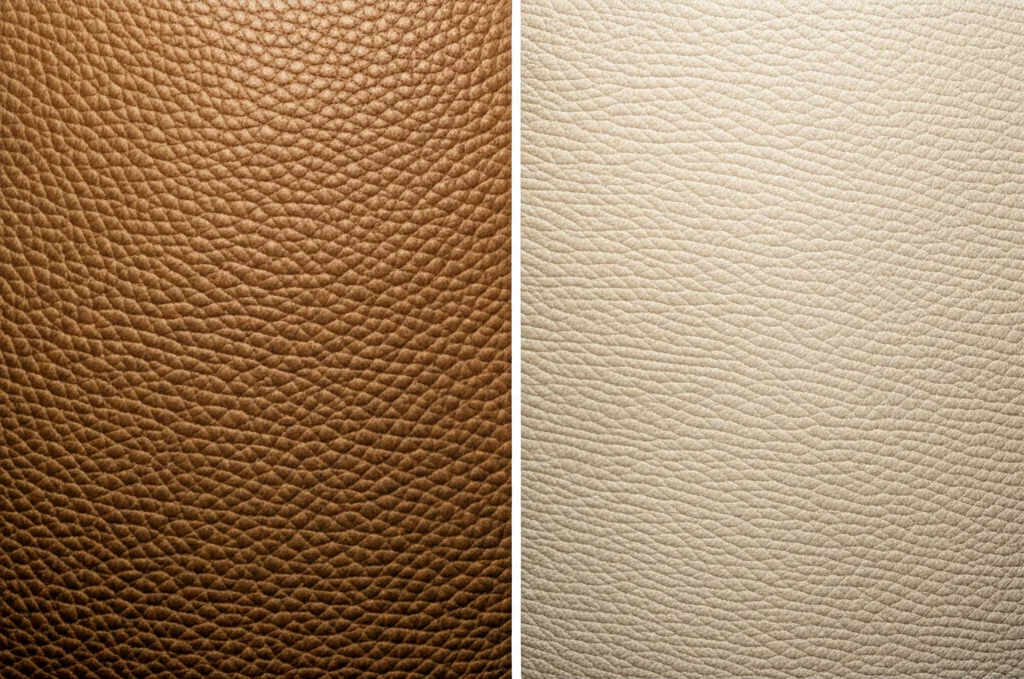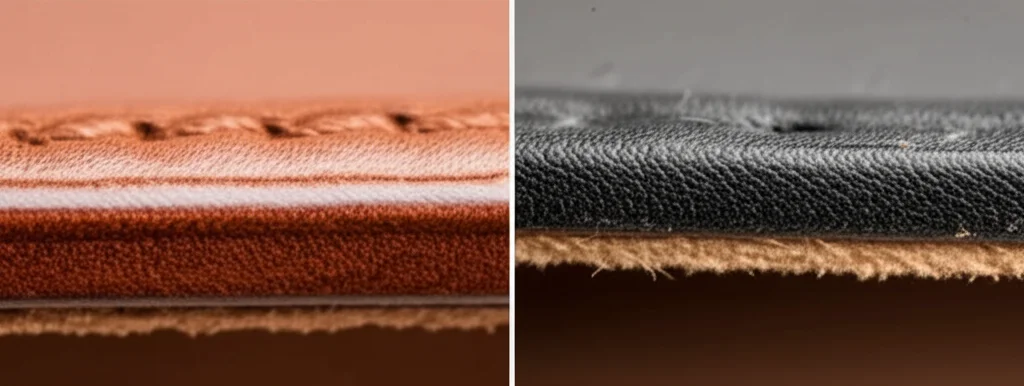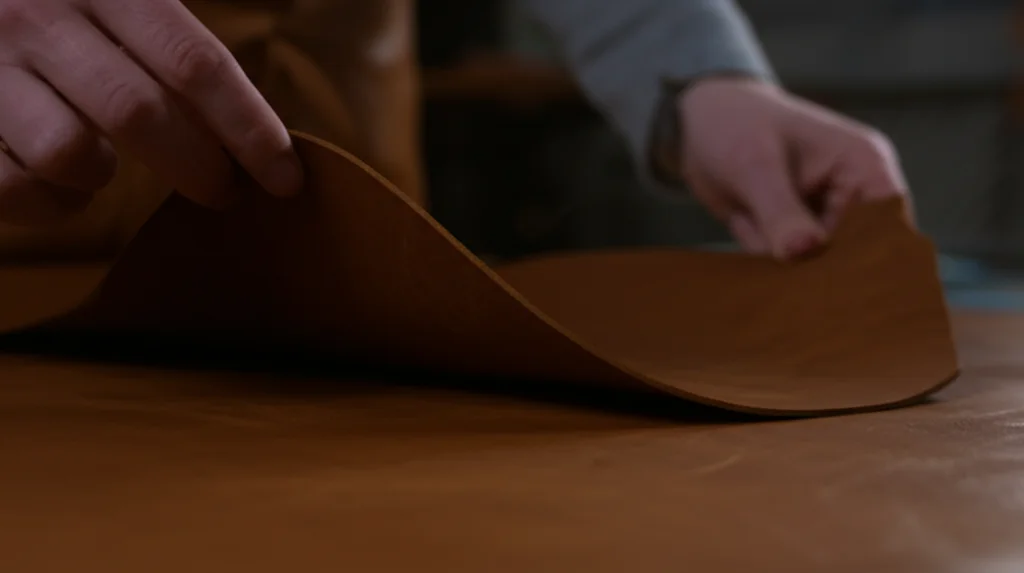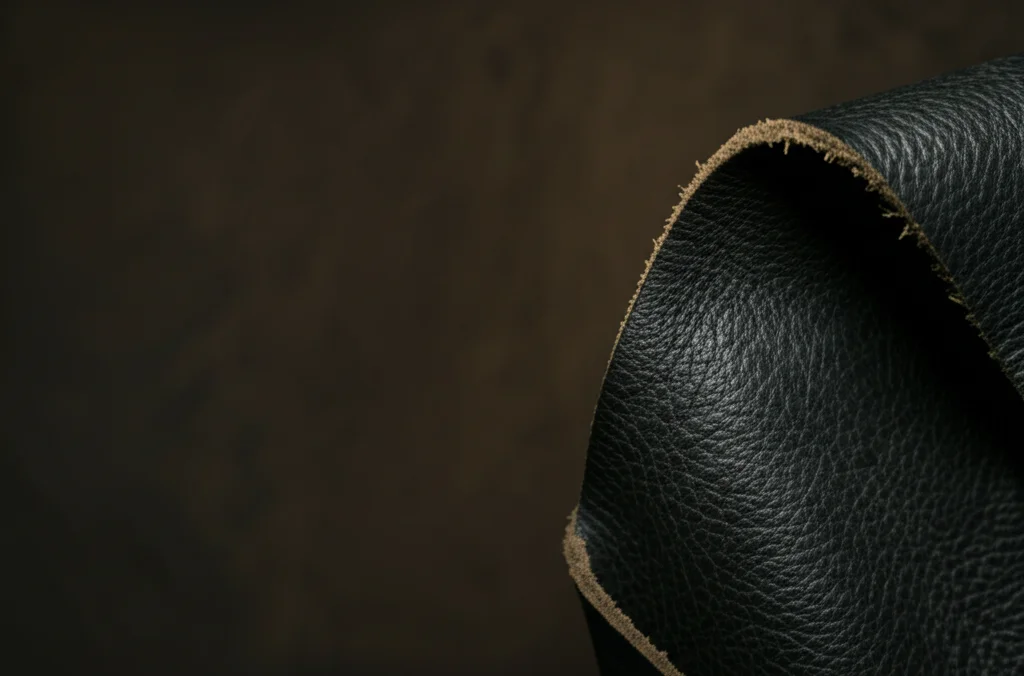Spot the Difference: A Craftsman's Tips for Identifying High Quality Leather



In a world flooded with options, telling truly high quality leather from the mediocre, or even from convincing fakes, can feel like a challenge. Price tags aren't always a reliable indicator, and labels can sometimes be confusing (more on that later). So how do you really know if that leather jacket you're eyeing is built to last and age beautifully?
As someone who has worked intimately with leather for over fifty years, I've learned that identifying quality often comes down to engaging your senses. Going beyond just the surface look and truly examining the material through sight, touch, and even smell reveals volumes about its origins and craftsmanship. Forget the marketing jargon; let's delve into the practical, sensory clues that separate exceptional leather from the rest.
Why Identifying Quality Leather Matters
Investing in high quality leather isn't just about status; it's about value and experience. Superior leather offers:
- Unmatched Durability: Well crafted jackets made from top tier hides can last decades, not just seasons.
- Beautiful Aging: It develops a unique patina, softening and gaining character over time, unlike lower quality materials that degrade.
- Superior Comfort: Good leather is often more breathable and molds to your body for a personalized fit.
- Authentic Feel: There's simply no substitute for the tactile richness of genuine, quality leather.
Understanding how to spot this quality empowers you to make smarter investments. Here's what to look, feel, and smell for:
1. Assess with Your Eyes: Look for Natural Character
Your first clues come from careful visual inspection.
- Grain Pattern: Look closely at the surface texture. Full grain leather, the best quality, retains the natural, unique grain pattern of the animal hide, including small imperfections, pores, and variations. It looks authentic because it is. Lower quality leathers, like corrected grain, often have their natural surface sanded off and an artificial, uniform grain pattern embossed onto them. It might look perfect, but it lacks natural character.
- Imperfections as Hallmarks: Minor scars, wrinkles, or variations in texture are not flaws in full grain leather; they are signs of authenticity, telling the story of the hide. A surface that looks too perfect or plasticky might be heavily processed or even faux.
- Color Richness: Examine the color. Quality leather often has a deep, rich color that seems to penetrate the material, rather than looking like a surface paint. Check folds and creases; the color should remain consistent.
- Edge Finishing: Look at the edges of panels or seams. Are they neatly finished (burnished, rolled, or cleanly cut) or do they look rough, overly painted, or fibrous? Quality craftsmanship extends to these details.


2. Engage Your Touch: Feel the Substance and Suppleness
How leather feels in your hands is incredibly revealing.
- Suppleness vs. Stiffness: Quality leather should feel supple and flexible, though the degree varies by type (lambskin is softer than cowhide). It shouldn't feel overly stiff, papery, or like plastic. Gently bend or fold a section; it should rebound naturally without excessive creasing.
- Substance and Weight: Good leather has a certain heft and substance. It feels durable, not thin or flimsy. Again, this varies by jacket style and leather type, but it should feel substantial for its kind.
- Temperature: Real leather tends to warm to your touch, adapting slightly to your body temperature. Faux leather often remains cooler or feels clammy.
- Smoothness (with Character): Even smooth finished leather often retains a subtle texture from the natural grain. Overly smooth, almost slick surfaces can indicate heavy correction or artificial materials.

3. Trust Your Nose: The Distinct Scent of Leather
Don't underestimate the power of smell!
- The Authentic Scent: Real, well tanned leather has a distinct, rich, slightly earthy, and often pleasant smell. It's natural and organic.
- Chemical Odors: Low quality leather might have faint chemical smells remaining from poor tanning processes. Faux leather, especially PVC based types, often has a noticeable plastic or chemical odor, particularly when new.
- No Smell? Be wary if there's almost no smell at all. Heavy finishing processes can sometimes mask the natural scent, or it might indicate a synthetic material.

Beyond the Senses: Labels and Construction
While sensory clues are key, consider these too:
- Understanding Labels: "Full Grain" is best. "Top Grain" is good quality. "Genuine Leather" is often a catch all term for lower quality leather made from inner layers (splits) that may be heavily processed or coated. It sounds good, but typically lacks the durability and character of higher grades. Learn more in our Real vs Faux guide.
- Overall Craftsmanship: High quality leather is usually paired with meticulous construction. Look for neat, even stitching, quality lining materials, and sturdy hardware (zippers, snaps). Poor construction often indicates corners were cut elsewhere, possibly including the leather itself.
Developing Your Eye (and Hand)
Identifying quality leather takes practice. Visit reputable stores, handle different jackets, and consciously apply these sensory tests. Over time, you'll develop an intuition for the look, feel, and smell of genuine quality.
By engaging your senses and looking beyond the surface, you can confidently assess the leather in any jacket, ensuring your next purchase is not just stylish, but a truly lasting investment in craftsmanship.
What are your key indicators when judging leather quality? Share your own tips or questions in the comments!
Subscribe to our Newsletter
Get the latest posts and updates delivered straight to your inbox.